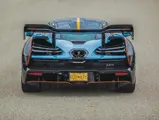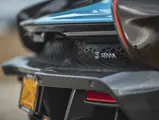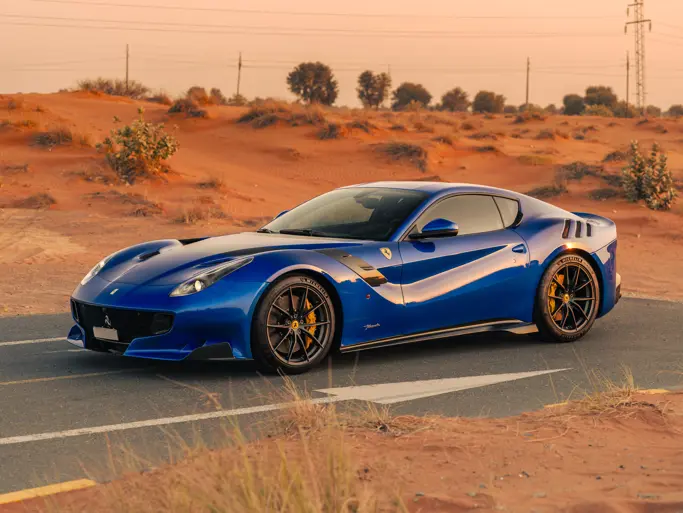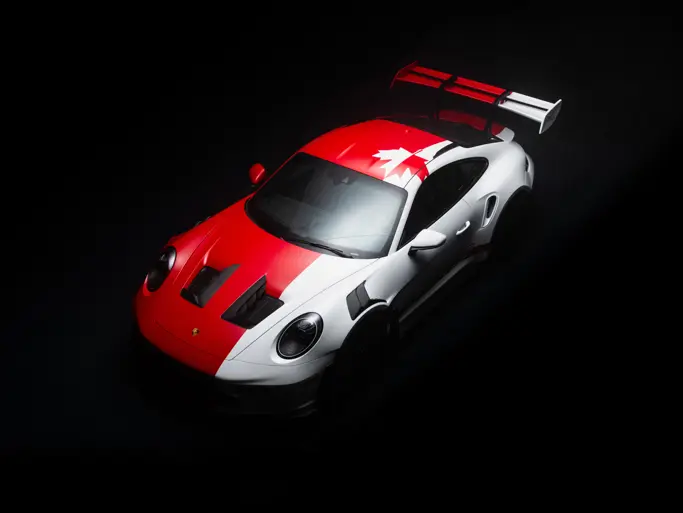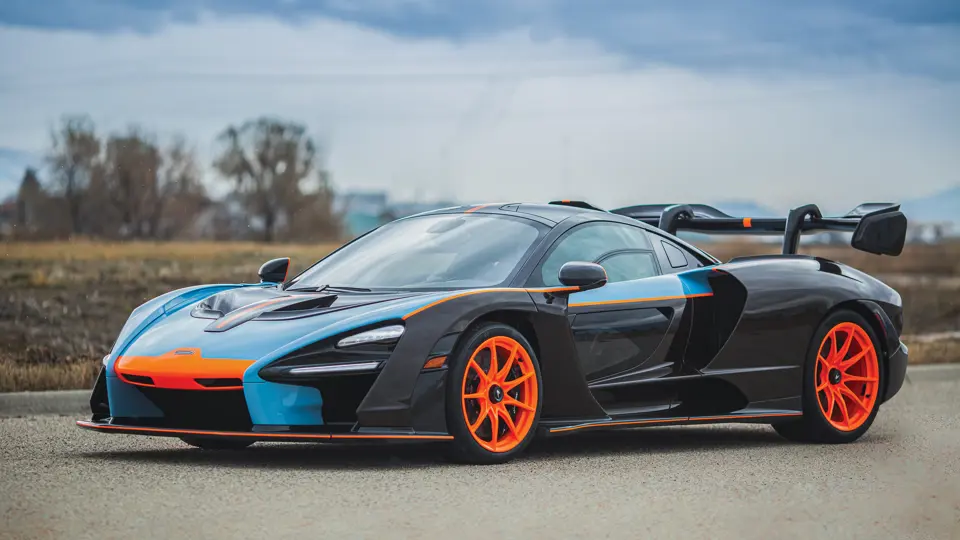
2019 McLaren Senna
{{lr.item.text}}
$1,100,000 - $1,250,000 USD | Not Sold
{{bidding.lot.reserveStatusFormatted}}
- One of 500 examples; brand-new with only 192 miles
- Finished in a render-matched MSO Gulf livery, a $193,941 option
- Boasts optional Bowers & Wilkins audio system, ultra-lightweight wheels, and track telemetry app
- An example of McLaren’s top-shelf Ultimate Series, the most track-focused model ever built
- Documented with a copy of the original window sticker
At the Geneva Salon in March 2018, McLaren unveiled its most track-focused car to date, the Senna. The Senna joined the P1 on the top shelf of the manufacturer’s model line, the Ultimate Series, named in honor of the legendary Formula 1 driver Ayrton Senna, who won three Drivers’ Championships for McLaren between 1988 and 1993. A six-time winner of the Monaco Grand Prix, Ayrton Senna was victorious in 41 races during his short career, racking up 35 wins for McLaren and establishing a perch in team lore that remains unequaled.
The use of Senna’s name for McLaren’s most focused track car is entirely appropriate given the model’s unparalleled design and performance envelope. Based on the concurrent 720S, the Senna is centered on a stiff, lightweight carbon-fiber tub dubbed the Monocage III, to which aluminum subframes are attached that house the running gear. This includes a revolutionary electronically administered hydraulic suspension called RaceActive Chassis Control II, which lowers the car in race mode by 39 mm at the front and 30 mm at the rear, stiffens settings to offset downforce, and constantly adjusts the pitch of the body depending on speed and surface level.
The Senna’s highly individual bodywork is composed entirely of carbon fiber and utilizes ground effects to accomplish a remarkable aerodynamic profile, with a long front splitter and active winglets channeling air over the body to the intelligent rear wing. In combination, these effects produce 800 kilograms of downforce at a paltry 155 mph, a metric that blows away other track-focused supercars. By way of comparison, a Lamborghini Huracán Performante requires 186 mph to develop just 350 kg of downforce, while a Porsche 911 GT3 RS produces 500 kg at 190 mph.
For motive power, McLaren’s highly developed twin-turbocharged 4-liter V-8 was further engineered to result in the type M840TR, the company’s most powerful internal combustion engine yet. Built by specialist Ricardo, the engine is mated to a seven-speed dual-clutch transmission and employs new induction manifolds, bespoke camshafts, high-flow fuel pumps, and a new titanium exhaust to develop an outrageous 789 hp and 590 foot-pounds of torque.
With an impressively low dry weight of 2,641 pounds (making it the lightest McLaren since the legendary F1), the Senna is capable of reaching 62 mph from standstill in just 2.8 seconds and 124 mph in 6.8 seconds, with a top speed of 208 mph. The hypercar is just as adept at braking, utilizing incredibly advanced next-generation Brembo carbon ceramic units that include six ventilated pistons, as well as discs that require seven months to build. The design provides peerless stopping power, as the Senna comes to a halt from 124 mph in just 100 meters and from 62 mph in a remarkable 30 meters. Traction and corresponding performance are further aided by bespoke Pirelli P Zero Trofeo R tires mounted on 19-inch front wheels and 20-inch rear units.
The Senna’s track mandate extends to the interior, where a remarkably spartan design is manifested by no stowage space, except for a shelf for race helmets, and option-only creature comforts. The three-spoke steering wheel is devoid of any cluttering buttons or switches, leaving the driver to focus solely on track performance. A freestanding infotainment screen communicates settings and other important information, including an optional track telemetry app that records attributes like throttle position, tire temperature, and brake pedal pressure, while relaying video images conveyed from three different on-car cameras. Control buttons have been ingeniously relocated to unconventional positions, with the powertrain and suspension dials just under the infotainment screen, transmission controls on the side of the driver’s seat, and the ignition button positioned on a roof console.
In a thrilling track test, Autocar magazine raved, “The Senna’s acceleration feels nothing less than savage.” The model holds a “specialized place in Woking’s range as its ultimate road-legal track car, not least because, for gearshift response time, all-round flexibility, high-revving freedom and linearity of throttle calibration, the Senna’s V-8 wants for absolutely nothing.” The brakes provide “absolutely jaw-dropping power…[inspiring the] confidence with which you can heave on the brake pedal on the run into a tight bend without feeling a snatch of ABS intervention or the faintest wiggle of handling instability…The car’s handling is unerringly consistent, predictable, and benign…[Its] active aero and suspension [add] a bedrock of stability into the car’s high-speed handling that allows you to guide it with incredible confidence, [and the] electrohydraulic power steering system provides absolutely world-class contact-patch feel…[The Senna’s] greatness as a track car is beyond question. No other road-legal track-day car has such a fully realized blend of mind-blowing circuit performance and excitement, amazingly tame drivability, and brain-frazzling driver reward.”
With production limited to just 500 examples, the Senna was assured the status of an instant collectible. Honored with the lofty distinction of Ayrton Senna’s name, the new model holds a very special place in McLaren production history.
Chassis no. 800087 was purchased new by the consignor from McLaren Greenwich of Stamford, Connecticut, and was finished in a $193,941 MSO custom finish of Iridium Blue that honors the Gulf Oil livery. Among its many motorsport relationships over the years, Gulf sponsored the McLaren Formula 1 and Can-Am teams from 1968 to 1974, enjoying seven victories in Formula racing and 35 wins in the formula-libre Can Am, including 20 different 1-2 finishes. Gulf was also a sponsor of the F1 GTR during the 1990s, winning nine races and the 1996 Global GT Championship.
According to an original window sticker, this historically evocative Senna was optioned with air-conditioning, a Bowers & Wilkins seven-speaker audio system, the McLaren track telemetry app, three-point harnesses, a bespoke black Alcantara steering wheel, orange upholstery stitching, branded floor mats, and ultra-lightweight nine-spoke wheels. Currently displaying 192 miles, the incredibly engineered and finished hypercar would make an unequaled acquisition for any performance enthusiast or McLaren collector. The Gulf-liveried car honors one of Formula 1’s most legendary drivers and is nothing short of magnificent, offering exhilarating track days or prestigious display at world premier supercar gatherings.
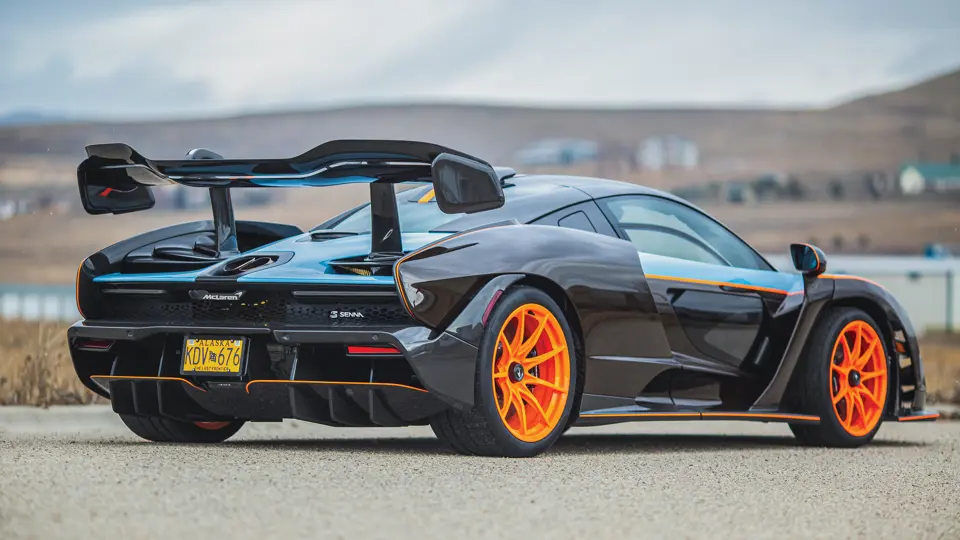



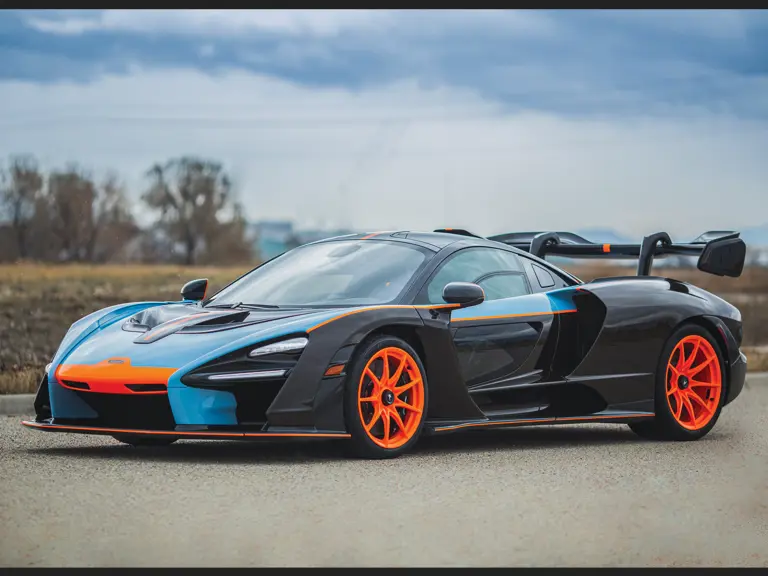
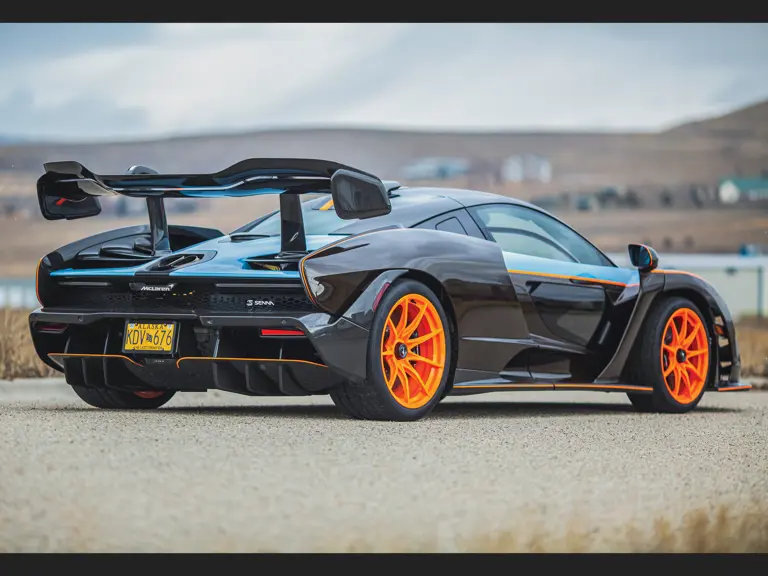
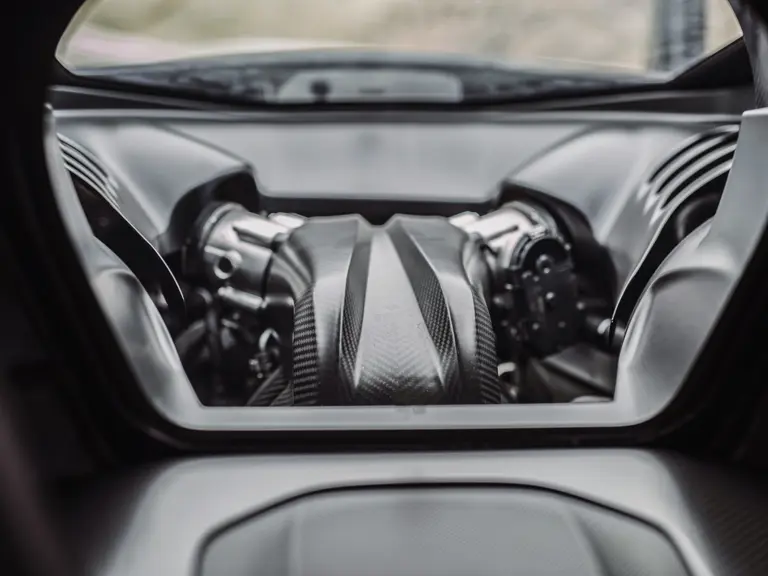
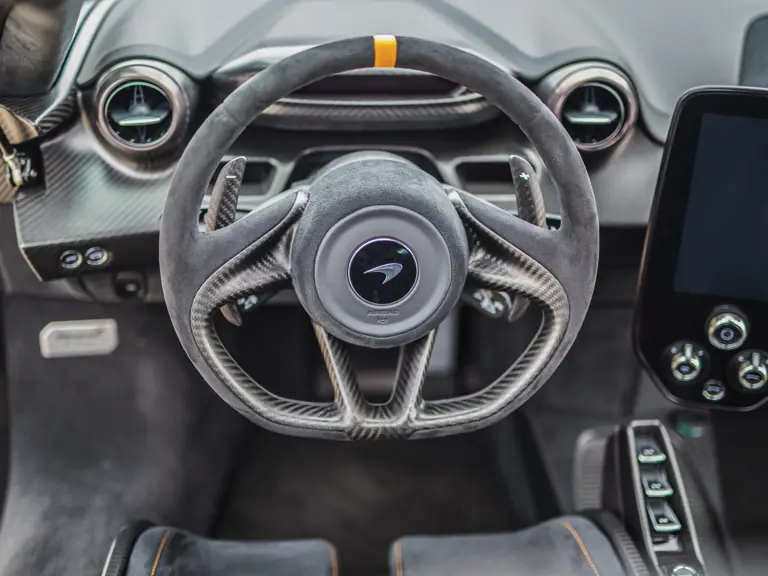

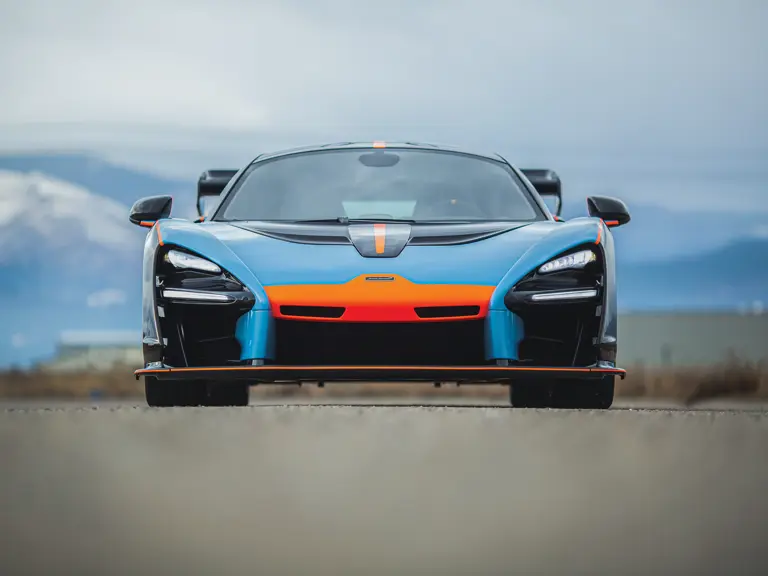
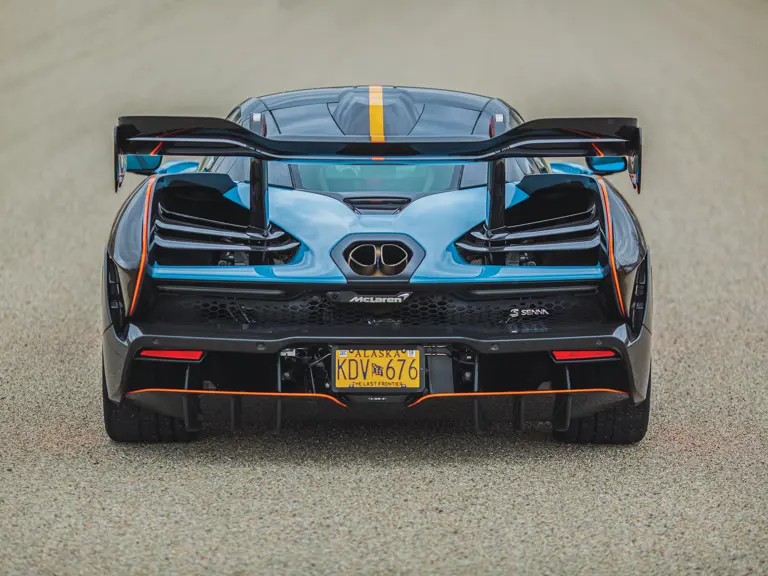
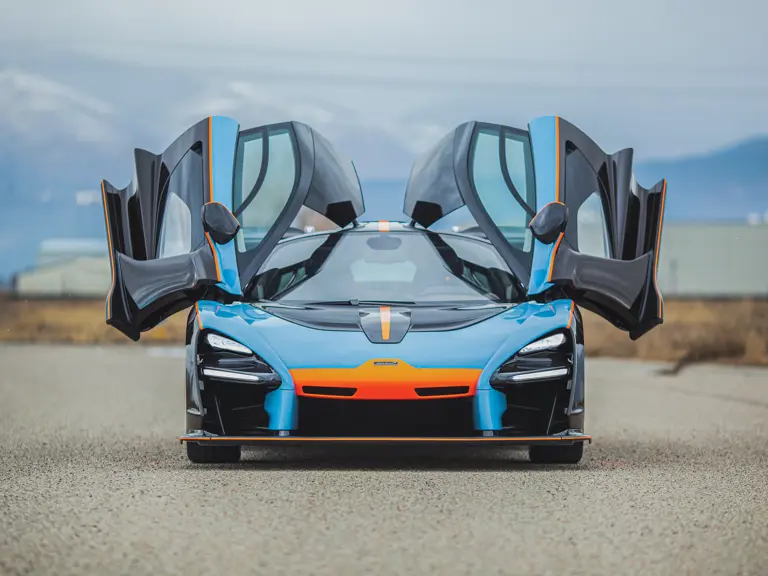

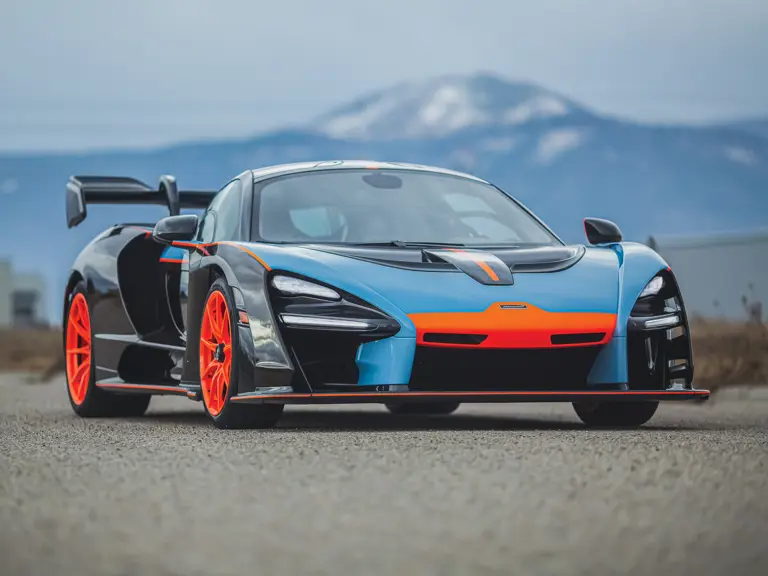
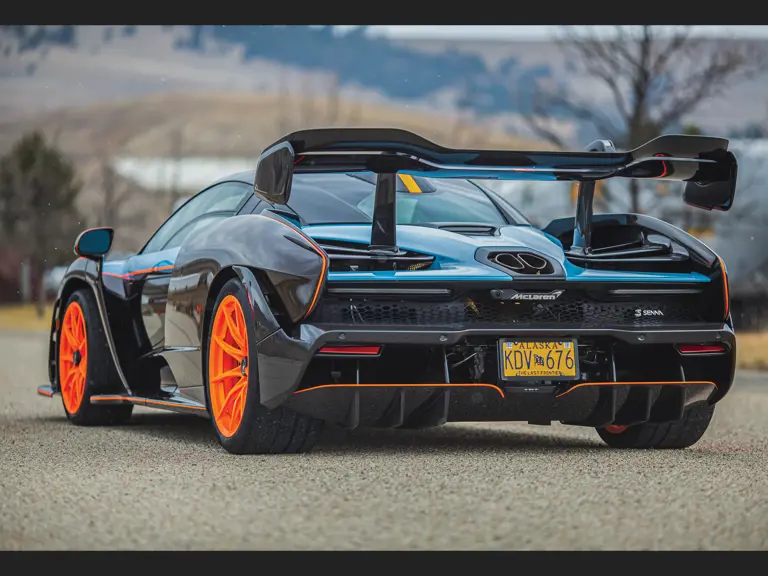
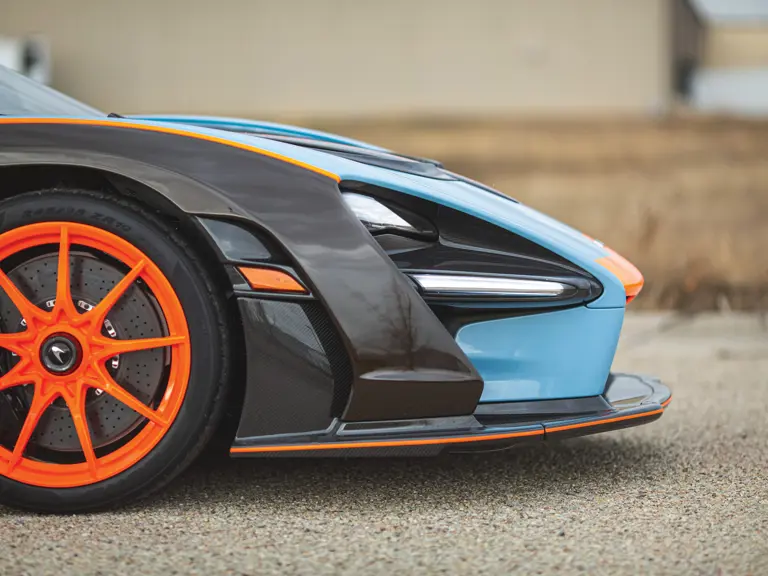

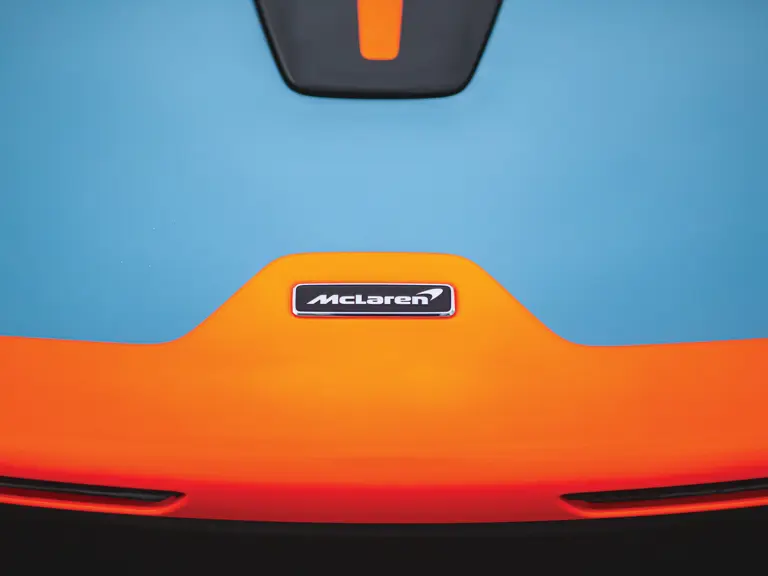
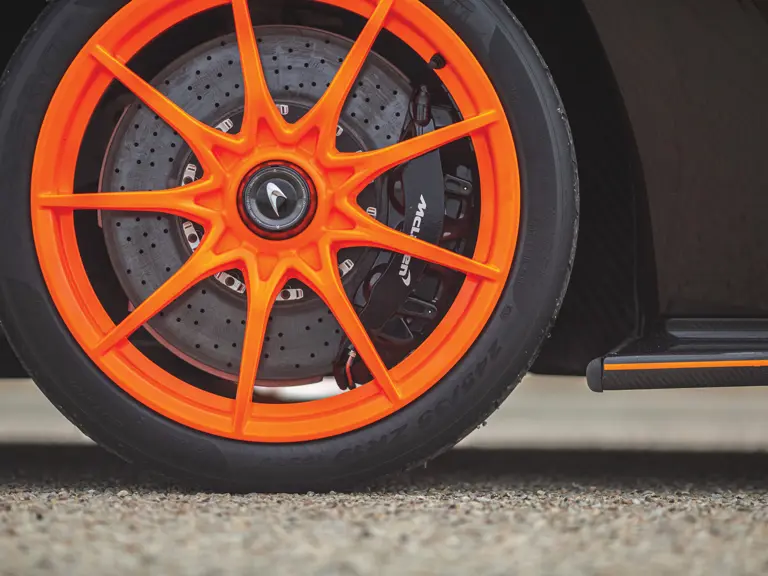
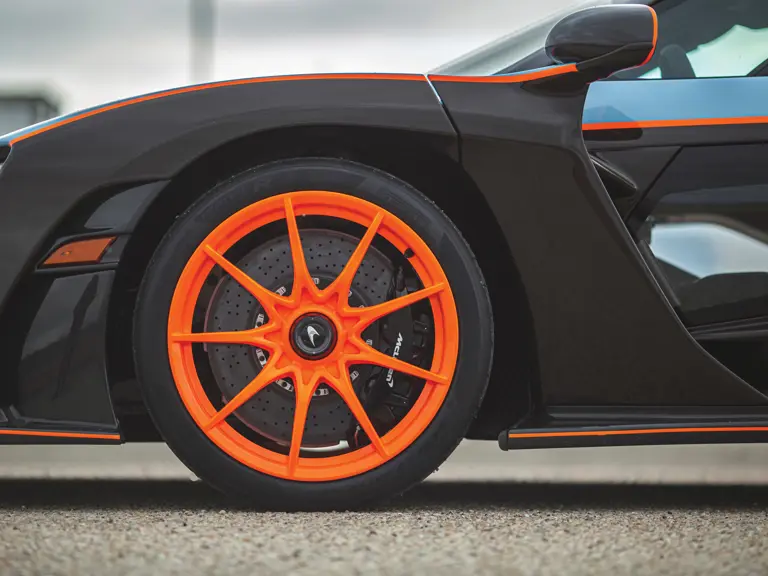
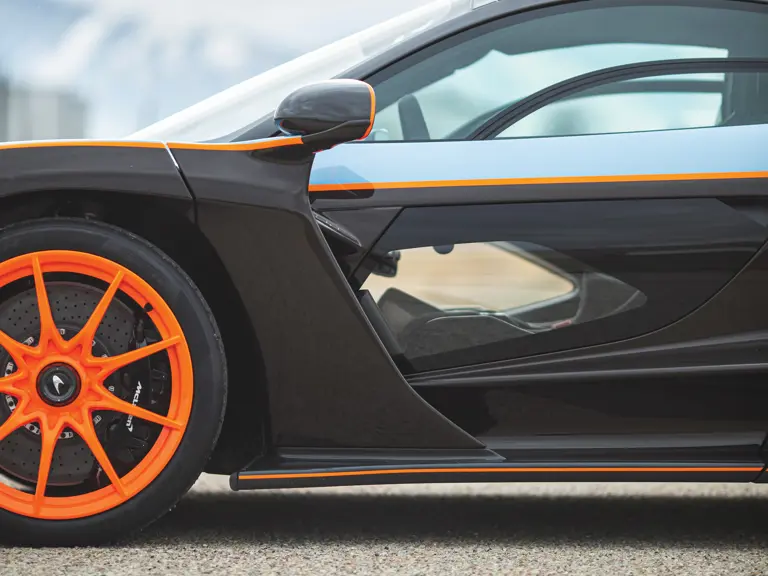
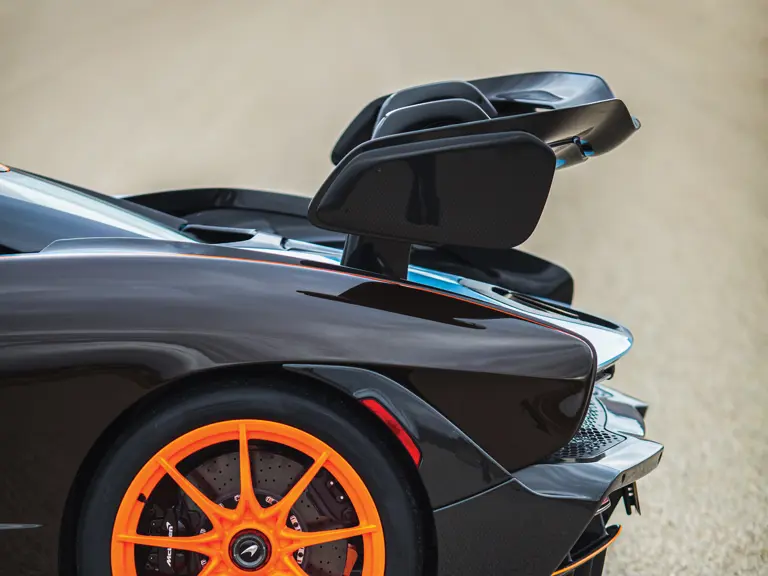
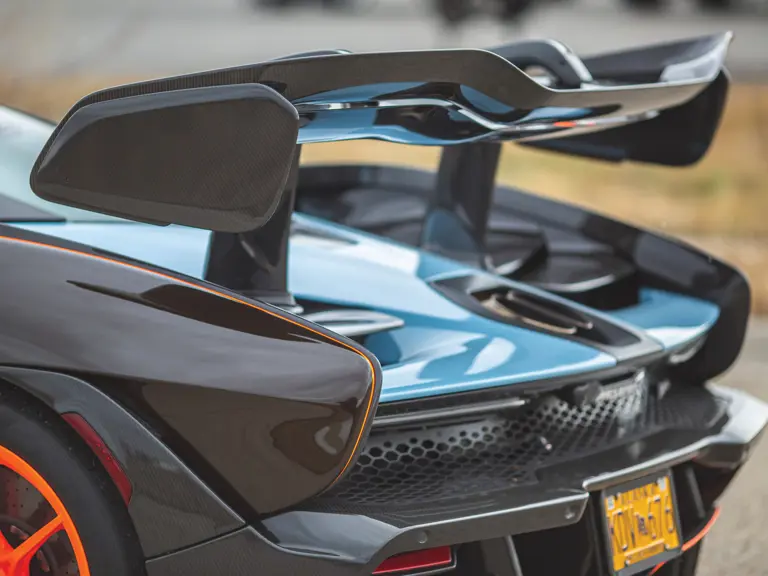
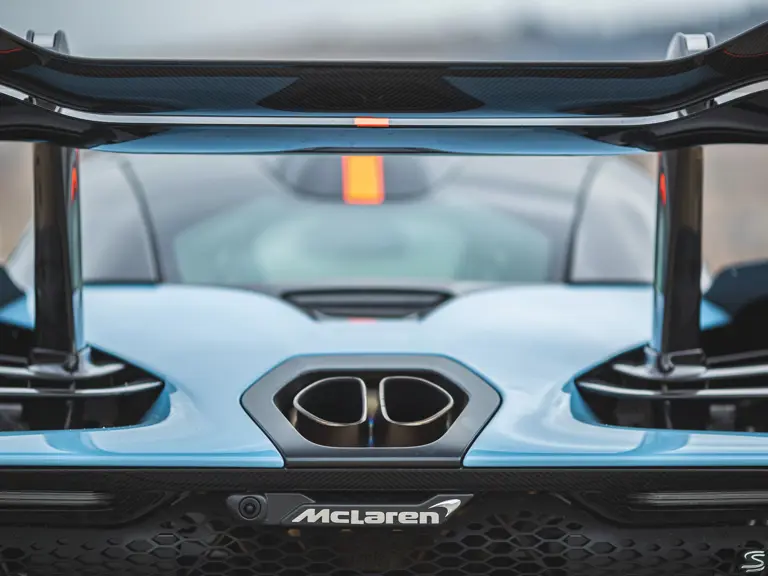
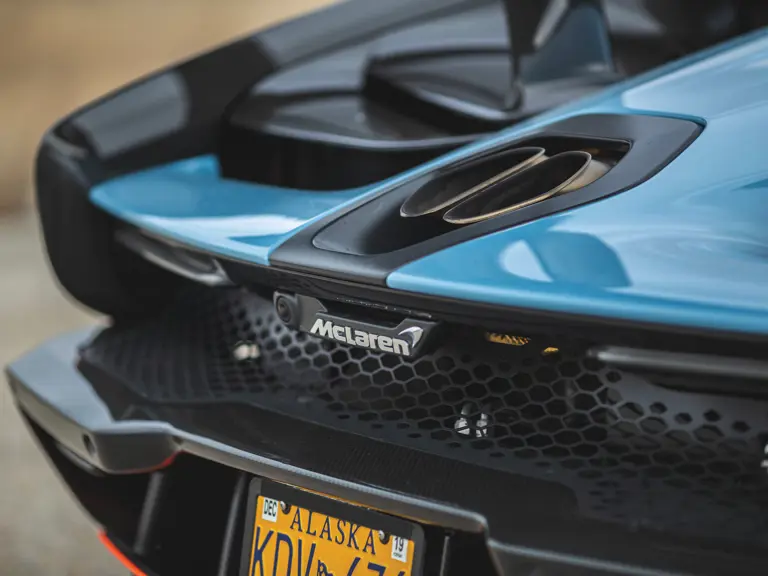


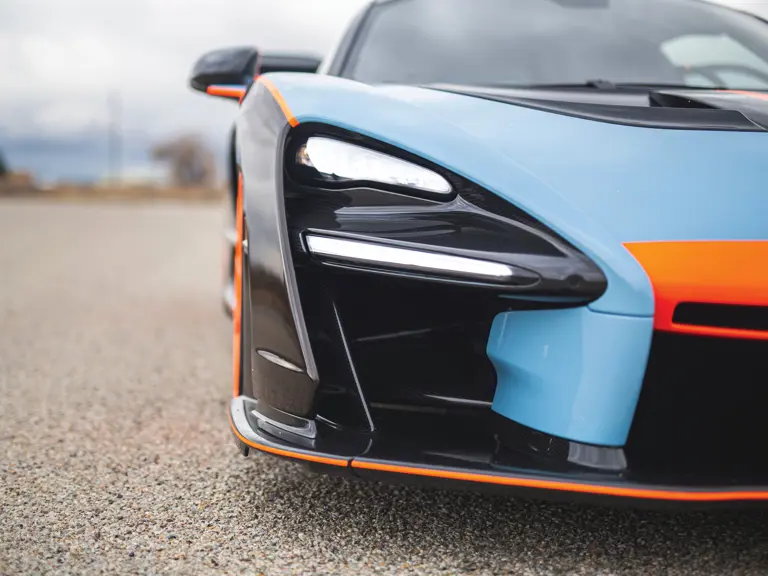
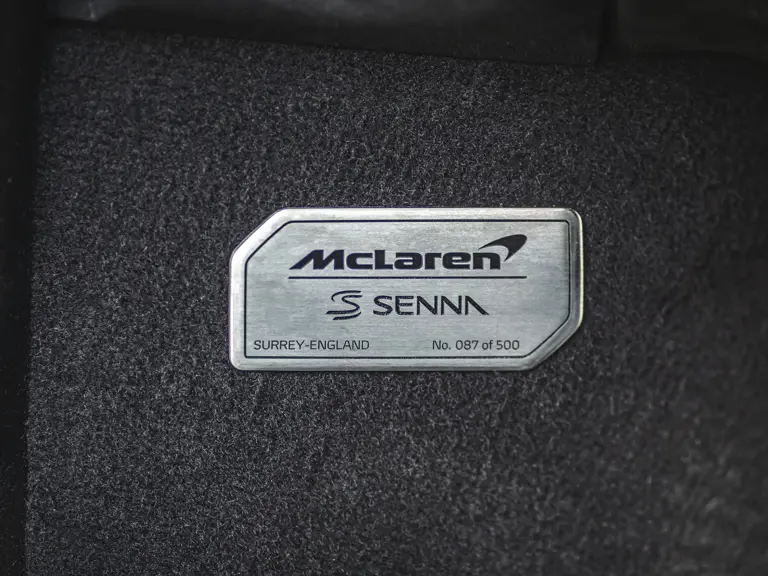
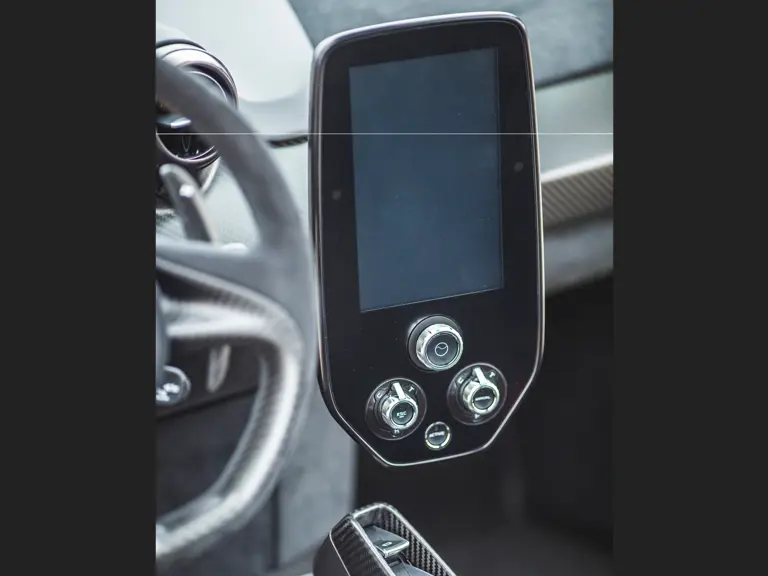
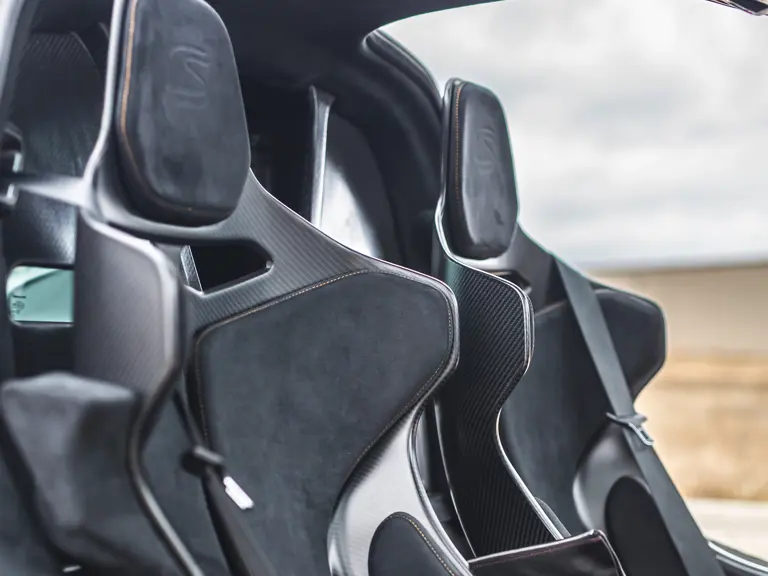
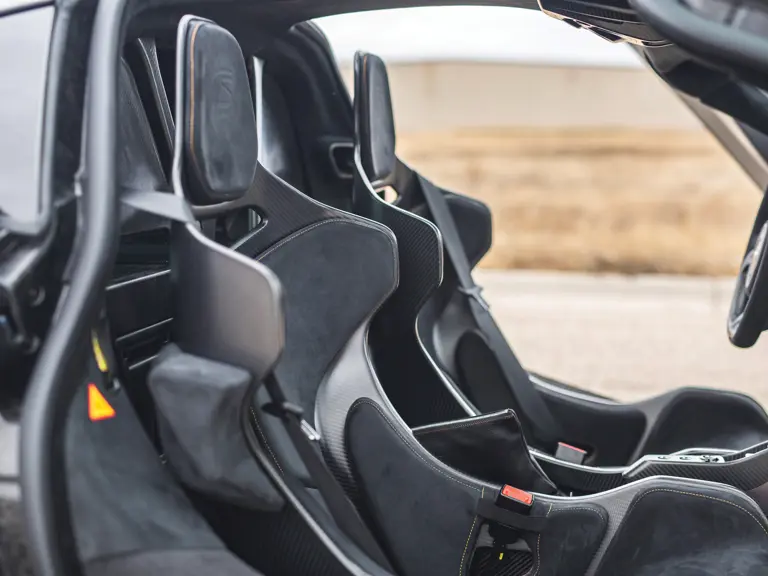
 | Phoenix, Arizona
| Phoenix, Arizona





